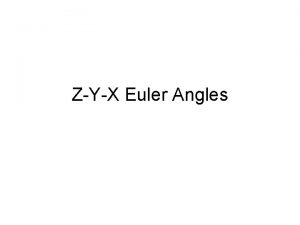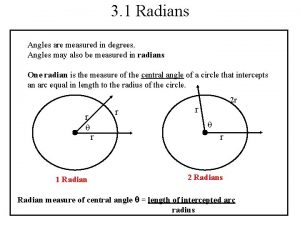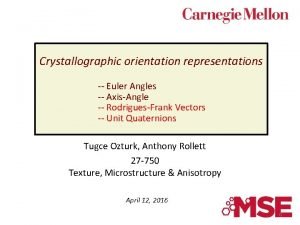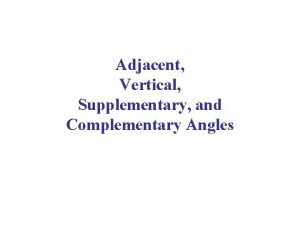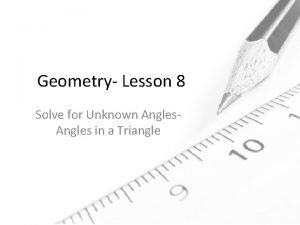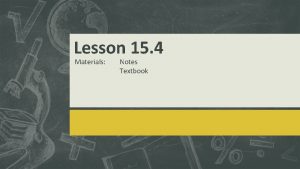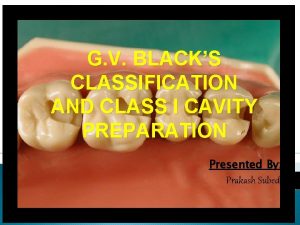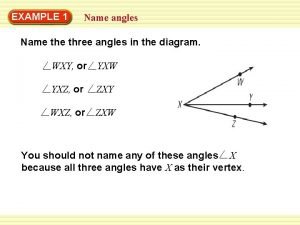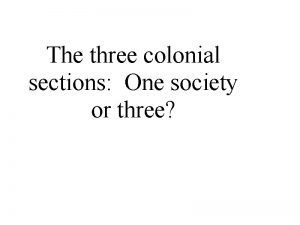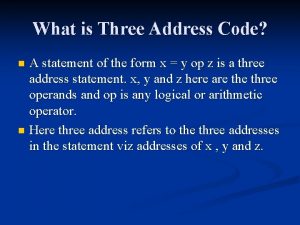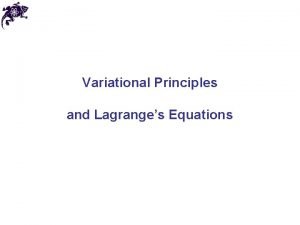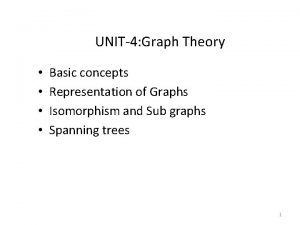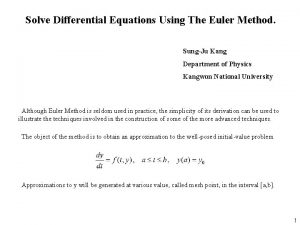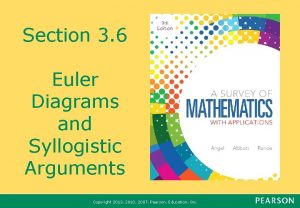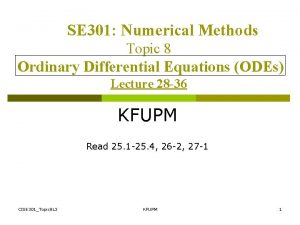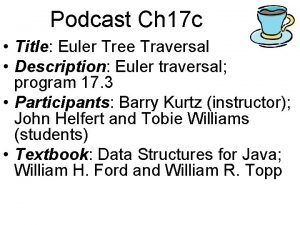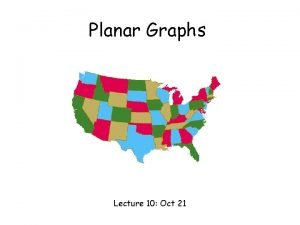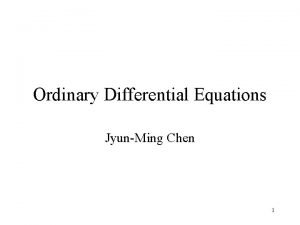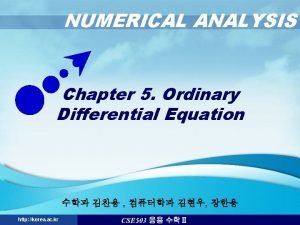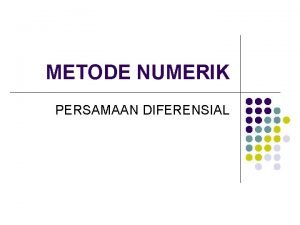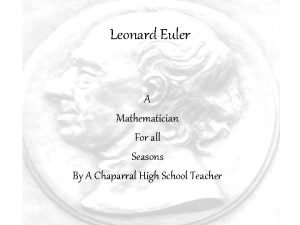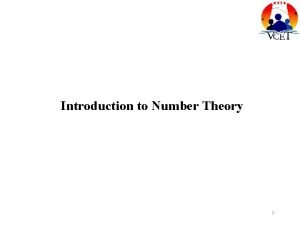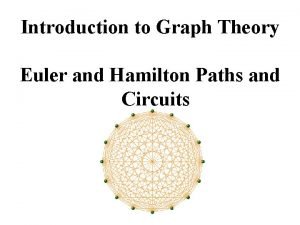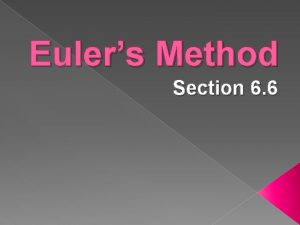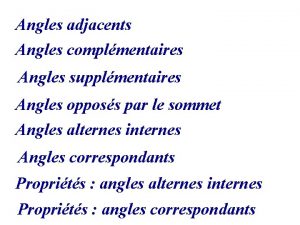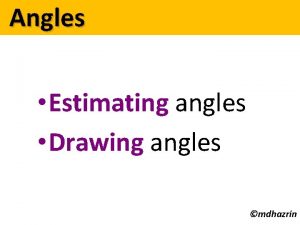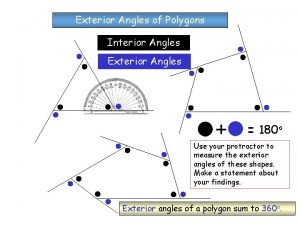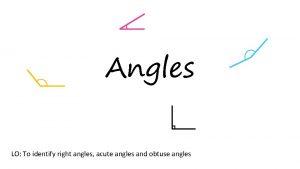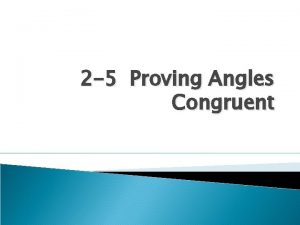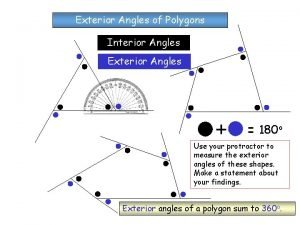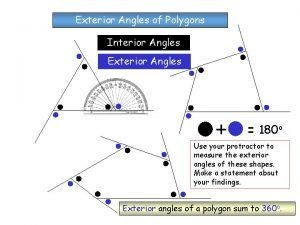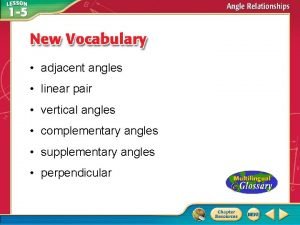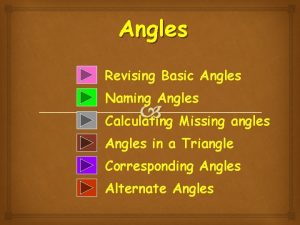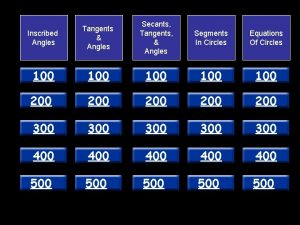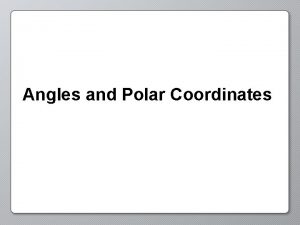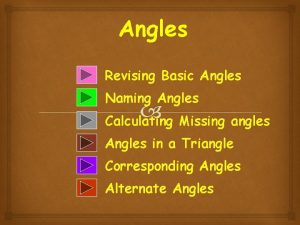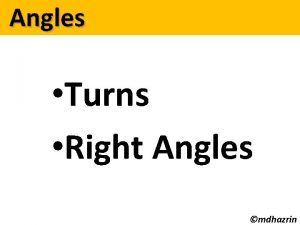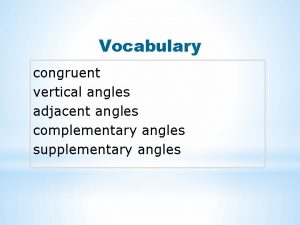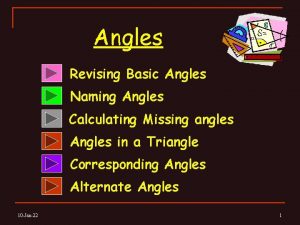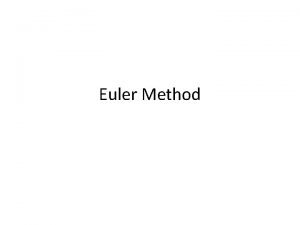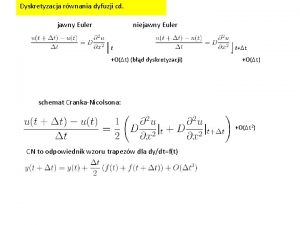ZYX Euler Angles ZYX Euler Angles Just three












































- Slides: 44

Z-Y-X Euler Angles

Z-Y-X Euler Angles - Just three numbers are needed to specify the orientation of one set of axes relative to another.

Z-Y-X Euler Angles -Just three numbers are needed to specify the orientation of one set of axes relative to another. -One possible set of these numbers is the Z -Y-X Euler angles

By following in parallel with Craig’s discussion of ZYX Euler angles, determine the counterpart to Eq. 2. 72, i. e. the 3 x 3 overall rotation matrix, but this time using Z-X-Z Euler angles. Keep the notation a b g for the first, second, third rotations, respectively.

Consider the {A} and {B} frames shown below.

How can we define just three quantities from which we can express all nine elements of the rotation matrix that defines the relative orientations of these frames?

Beginning with the {A} frame, rotate a positive a about the ZA axis.

Call this new frame {B’}

Note the rotation matrix between {A} and {B’}

Note the rotation matrix between {A} and {B’}

Note the rotation matrix between {A} and {B’}

Note the rotation matrix between {A} and {B’}

Note the rotation matrix between {A} and {B’}

Next consider just the intermediate {B’} frame.

Consider a positive rotation b about the YB’ axis.

Suppose the second rotation b had instead occurred about the original YA axis?

Suppose the second rotation b had instead occurred about the original YA axis?

Suppose the second rotation had instead occurred about the original YA axis?

Returning to the Z-Y-X Euler Angles …

… take the last rotation g to be about the XB” axis.








By following in parallel with Craig’s discussion of ZYX Euler angles, determine the counterpart to Eq. 2. 72, i. e. the 3 x 3 overall rotation matrix, but this time using Z-X-Z Euler angles. Keep the notation a b g for the first, second, third rotations, respectively.

Beginning with the {A} frame, rotate a positive a about the ZA axis.

Note the rotation matrix between {A} and {B’}

As before, we consider the intermediate {B’} frame.

This time, however, the second rotation b is not about the intermediate Y axis, but rather about the intermediate X axis.












Craig, problem 2. 38: Imagine to unit vectors v 1 and v 2 embedded in a rigid body. Note that, no matter how the body is rotated, the geometric angle between these two vectors is preserved (i. e. rigid-body rotation is an “angle-preserving” operation). Use this fact to give a concise (four or five line) proof that the inverse of a rotation matrix must equal its transpose and that a rotation matrix is orthonormal.
 Euler angle zyx
Euler angle zyx In the figure angle zyx is measured in degrees
In the figure angle zyx is measured in degrees In the figure angle zyx is measured in degrees
In the figure angle zyx is measured in degrees Euler circuit
Euler circuit Euler trail
Euler trail Properties of vertically opposite angles
Properties of vertically opposite angles Did paris love juliet give evidence
Did paris love juliet give evidence Bunge euler angles
Bunge euler angles Adj angle supp
Adj angle supp Find the unknown labeled angles
Find the unknown labeled angles Module 15 angles and segments in circles answer key
Module 15 angles and segments in circles answer key Gv black classification of tooth preparation
Gv black classification of tooth preparation Name three angles
Name three angles Three hobbits and three orcs
Three hobbits and three orcs Othello act 3 summary
Othello act 3 summary In three minutes write
In three minutes write Traffic signs purpose
Traffic signs purpose The three colonial sections-one society or three
The three colonial sections-one society or three Three addresses in three address code are
Three addresses in three address code are Generalized coordinates
Generalized coordinates Euler equation economics
Euler equation economics Self complementary graph
Self complementary graph Gordon formula for columns
Gordon formula for columns Euler method
Euler method Arguments and euler diagrams examples
Arguments and euler diagrams examples Euler method truncation error
Euler method truncation error Cuales son los poliedros platonicos
Cuales son los poliedros platonicos Poliedros y no poliedros
Poliedros y no poliedros Euler tour traversal
Euler tour traversal Connected planar graph
Connected planar graph Viento de euler
Viento de euler Backward euler method
Backward euler method Méthode d euler
Méthode d euler Backward euler method
Backward euler method Euler method formula
Euler method formula Transient solution differential equations
Transient solution differential equations Modelos de grafos
Modelos de grafos Turunan euler
Turunan euler Leonhard euler accomplishments
Leonhard euler accomplishments 6^24mod35
6^24mod35 Eulerian circuit example
Eulerian circuit example Euler körséta
Euler körséta Euler trail
Euler trail One dimensional flow
One dimensional flow Eulers method formula
Eulers method formula
